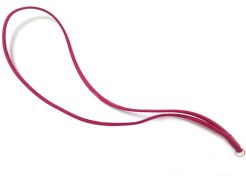.
The best ACME dog whistle
We have many available ACME dog whistles in our webshop that are well-suited for communicating with and training all types of dogs. But which ACME dog whistle is the best? That depends on what you’ll be doing with your dog. Your dog’s hearing and the distance at which your dog should be able to hear the ACME dog whistle also factor into choosing the dog whistle that’s right for you.
There are many types of ACME dog whistles, which are available in various colours and they are made of synthetic material. That material was chosen specifically so the whistles can even be used in extremely cold temperatures. Each ACME dog whistle has a certain frequency with a set number of Hertz. Higher frequencies produce higher tones, but travel less far than lower frequencies, meaning they’re more difficult to hear over longer distances. The opposite is true for lower frequencies, which CAN be heard well over long distances. If you have a retrieving dog that tends to walk a fair distance away from you, you might want to choose an ACME dog whistle with a lower frequency. If your dog tends to stay nearby, you might want to opt for an ACME whistle with a higher frequency. After all; the best ACME dog whistle is one that suits you and your dog.
How to use ACME dog whistles?
Choosing the right ACME dog whistle for your situation is a very important first step and you’ll want to pay attention to the distance, as that plays a huge role. That’s because an ACME dog whistle is primarily a means to communicate with your dog over long distances, rather than just being a training tool. Choosing the right whistle will widen your communicative reach considerably, without shouting at the top of your lungs.
If your dog is already used to voice commands, you’ll have no problem teaching it the accompanying whistle commands. There are a great many training methods, but we’ll give you an example:
You can start by calling your dog and blowing the ACME whistle. By doing this every time you call your dog, it will start associating the command with the ACME dog whistle. Repeating this consistently will allow you to eventually stop using voice commands altogether and your dog will react to the whistle alone. The ACME dog whistles produce only one tone, but you can use different signal lengths (such as one long tone or two short ones) to communicate various commands to your dog.
ACME dog whistles can also be used as a tool to help train your dog if it doesn’t react well to voice commands. An ACME whistle has an extremely consistent tone, which will prevent any frustration in your voice from being conveyed to your dog. Your dog will pick up any frustration through your voice commands, which will only slow things down. And that’s exactly why the ACME dog whistle can be such an effective tool. Whether you’re happy or about to give up, the ACME dog whistle will produce the same exact tone every time you use it.
How do ACME dog whistles work?
ACME whistles rely on various factors for their effectiveness, such as the blow rate, the tone and the pitch.
Blow rate represents how hard you’ll have to blow on a whistle to produce a recognisable sound. The ACME Thunderer, for instance, is a whistle you can use to produce a quiet tone by blowing on it softly, meaning it has a low blow rate. The ACME dog whistles produce only one tone, which goes hand in hand with a predetermined (high) blow rate.
The tone and pitch are closely connected. When it comes to tone, we mostly talk about sound quality or the sound’s colour. That sound quality is a combination of different factors, such as the pitch and the intensity of the sound. Tone plays a huge role in how we perceive a sound. A sound’s tone can be warm, shrill, warm or piercing.
Pitch factors into the tone and it’s a result of the sound waves’ frequency. The frequency is the pace at which the sound waves follow each other. A faster pace results in a higher pitch. With a slow pace, the sound waves are further apart, which results in a lower pitch.
The origin of the ACME dog whistle
Nowadays, we can’t imagine a world without loud whistles -such as those of referees or conductors- but Joseph Hudson was the first who actually did imagine it back in 1883. The two brothers Joseph and James Hudson founded their company in 1870 and named it J Hudson & Co Whistles Ltd., which would later be renamed ACME Whistles. The company focused primarily, as the name implies, on whistles, but it wasn’t until 1883 that they’d garner big success and widespread renown. That was the year that the London police force held a contest of sorts to find a new means of easily getting civilians’ attention.
Joseph Hudson was already designing various whistles, but the sudden demand for a better, more efficient whistle really made him think. He did so -as was his custom- while playing his violin. After he was done playing, he tried to put the violin away, but it accidentally fell to the floor. It broke and produced a piercing and discordant sound, that instantly put Hudson on edge. That event inspired him to design the winning whistle and it made such an impression that the police force placed an order for no less than 21,000 whistles. Hudson then designed a new referee whistle in 1884 -called the ACME Thunderer- and in 1935 they had already produced more than 300 different types of ACME whistles. They started selling their brand new ACME dog whistle in that same year.
Since 1935, ACME Whistles has produced a variety of dog whistles and they’ve continued improving on them over the years. All dog whistles have an eye, which can be used to attach various lanyards. The benefit of a dog whistle with a lanyard is that you’ll have it within reach at all times. They also changed the material that the whistles were made from. Originally, whistles were made from brass, which was rather inconvenient in cold weather. Nowadays, ACME dog whistles are made from synthetic material, so there’s no longer any danger of them freezing to your lips.







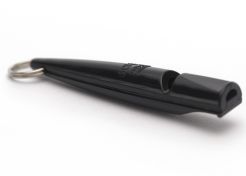
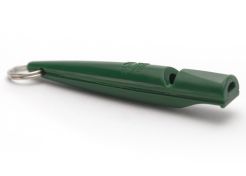
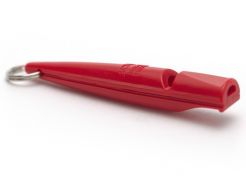
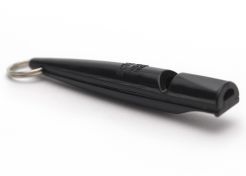
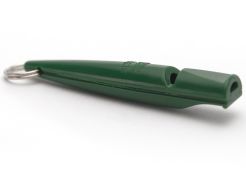
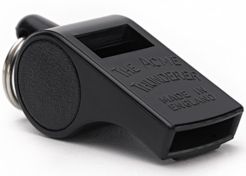

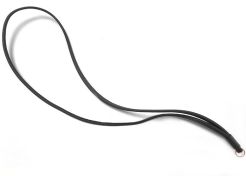
 Fast & secure delivery
Fast & secure delivery Secure shopping & payment
Secure shopping & payment Lots of expertise
Lots of expertise